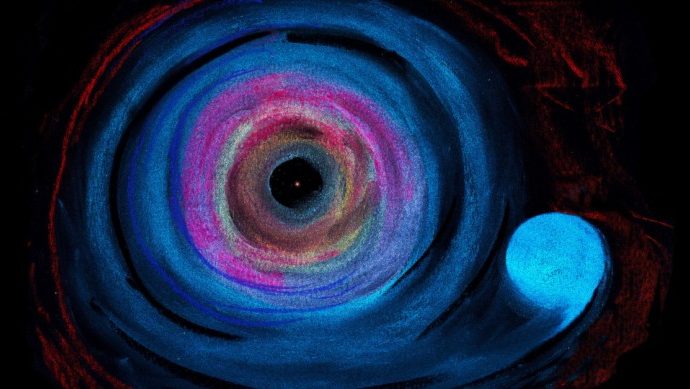A bright flare nicknamed “The Cow” may have been the birth of a black hole or neutron star.
Scientists might have witnessed the formation of a black hole for the first time. Back in June scientists spotted an unusually bright flare-up that they now think could have been a black hole or neutron star at the moment of its creation.
The bright glow was spotted about 200 million light-years away in the Hercules constellation, by the ATLAS survey’s twin telescopes in Hawaii. The unusual event mystified scientists who witnessed it.
The flare was nicknamed “The Cow” and disappeared almost as quickly as it surfaced. After comparing data from different sources, scientists are now confident that what they saw was the exact moment that a star collapsed into a compact object, forming a black hole or a neutron star.
First time ever a black hole formation has been witnessed

This is the first time such an event has been witnessed, and it is hoped the historical event will allow them to understand more about the physics of black holes.
“We think that ‘The Cow’ is the formation of an accreting black hole or neutron star,” said Northwestern University’s Raffaella Margutti, who led the research.
“We know from theory that black holes and neutron stars form when a star dies, but we’ve never seen them right after they are born. Never.”
Initially, scientists assumed the flash had come from a bright star or supernova. However, it did not share the same behavioral traits as other kinds of stars. For example, it was more than 100 times brighter than a typical supernova, and flared up and disappeared much more quickly.
It also pushed its particles away so quickly that all evidence of the event almost disappeared within 16 days. “We knew right away that this source went from inactive to peak luminosity within just a few days,” Margutti said.
“That was enough to get everybody excited because it was so unusual and, by astronomical standards, it was very close by.”
Scientists used a range of tools to gather data on The Cow
The scientists used a range of scientific equipment to monitor the flash during and after the event to begin to understand what exactly it was. Fortunately, the black hole isn’t covered by a lot of material like most others which allowed the researchers to peer right inside it.
“A ‘lightbulb’ was sitting deep inside the ejecta of the explosion,” Margutti explained.
“It would have been hard to see this in a normal stellar explosion. But The Cow had very little ejecta mass, which allowed us to view the central engine’s radiation directly.”
It’s relative closeness to earth is also a plus for scientist to get the most amount of data from the event as possible. “Two hundred million light years is close for us, by the way. This is the closest transient object of this kind that we have ever found,” Margutti observed.
Margutti and her team are using a comprehensive approach to examine “The Cow” using X-rays, hard X-rays (which are 10 times more powerful than normal X-rays), radio waves and gamma rays.
This enabled them to continue studying the anomaly long after its initial visible brightness faded. Traditional analysis of stellar deaths has only been done in the optical wavelength
Source: Interesting Engineering

































Leave a Comment
You must be logged in to post a comment.